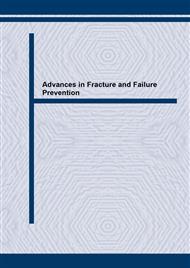p.1641
p.1647
p.1653
p.1659
p.1665
p.1671
p.1677
p.1683
p.1689
The Study on Effects of Thermal Aging of Dissimilar Weld Zone in a Primary Reactor Cooling System
Abstract:
In a primary reactor cooling system(RCS), a dissimilar weld zone exists between austenitic-ferritic duplex cast stainless steel(CF8M) in a pipe and low-alloy steel(SA508 cl.3) in a nozzle. Thermal aging is observed in CF8M as the RCS is exposed for a long period of time to a reactor operating temperature between 290 and 330°C, while no effect is observed in SA508 cl.3. An investigation of the effect of thermal aging on the various mechanical properties of the dissimilar weld zone is required. The purpose of the present investigation is to find the effect of thermal aging on the dissimilar weld zone. The specimens are prepared by an artificially accelerated aging technique maintained for 100, 300, 900, 1800 and 3600 hrs at 430°C, respectively. The various mechanical tests for the dissimilar weld zone are performed for virgin and aged specimens.
Info:
Periodical:
Pages:
1689-0
Citation:
Online since:
April 2004
Authors:
Price:
Сopyright:
© 2004 Trans Tech Publications Ltd. All Rights Reserved
Share:
Citation:


